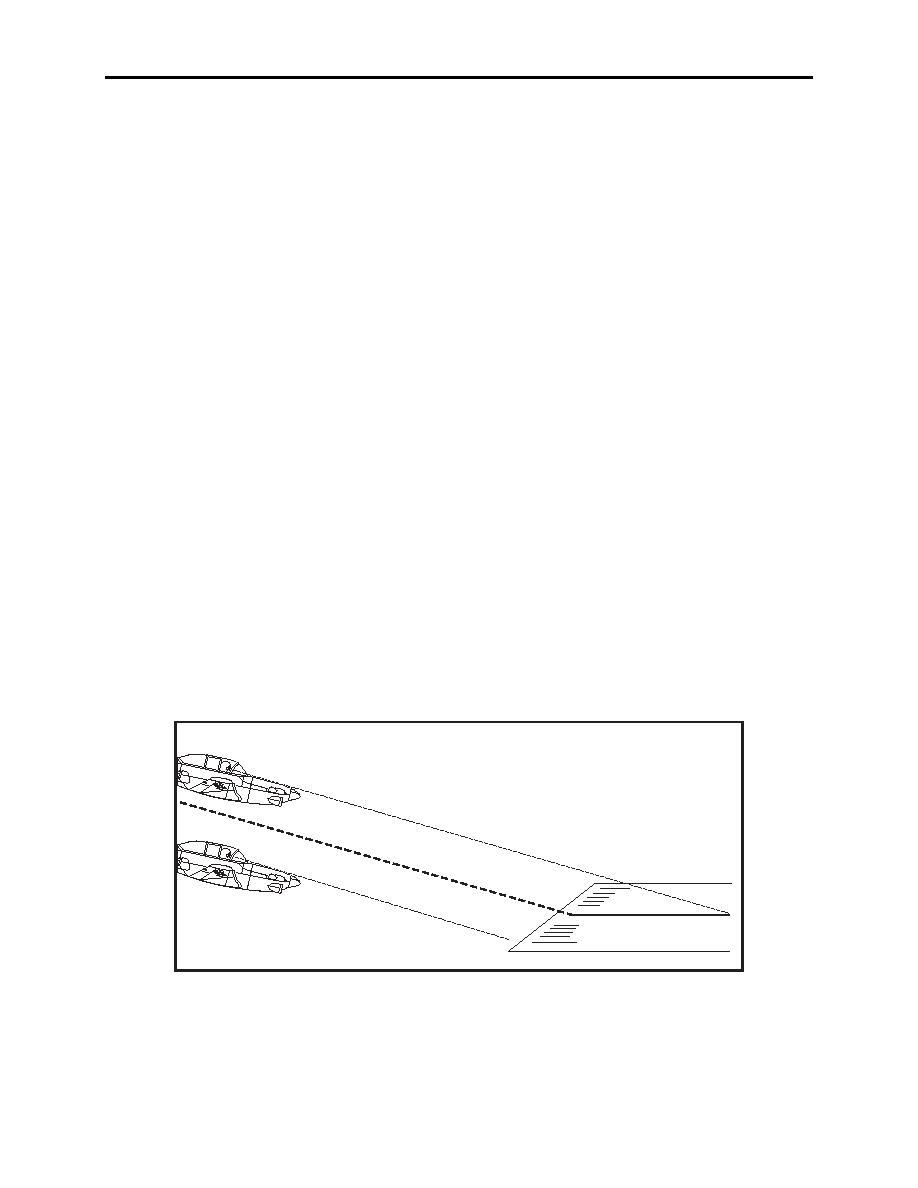 |
|||
|
|
|||
|
Page Title:
Figure 7-9. Glideslope Corrections |
|
||
| ||||||||||
|
|  T-34C CONTACT
CHAPTER SEVEN
f.
There are three general areas to consider in flying a good approach.
i.
SCAN. A rapid integrated scan pattern is a necessity. The exterior cues of the
"picture" and landing area alignment, and the internal cues of tactile sensation
and inner ear ("seat-of-the-pants"), must be "scanned" and integrated with
instrument readings for an accurate total appraisal of the pilot's present
situation. An anticipation of trends and early correction can then be made.
ii.
FUNNEL EFFECT. Because of the cone shape of the straightaway/groove
large corrections must be made while far out, and small corrections as
touchdown is approached.
iii.
COUNTER-CORRECTION. For every correction that is made, there will be
a counter-correction necessary to achieve stability. The overall goal is to
achieve stability of attitude and rate of descent, and cross the runway at a
precise altitude on the centerline of the landing area. Stability of the above
factors must not be construed to mean that power and controls are necessarily
stable. Smoothness comes from recognizing errors early, through a rapid scan,
and being able to make a small correction before the aircraft deviates far from
optimum.
The glideslope (altitude) is controlled primarily with power, and the attitude/
airspeed primarily with the stick, but it cannot be overemphasized that there
must be a coordinated use of both in any correction. In analyzing a situation,
there are two basic elements to be considered: speed (either fast or slow) and
altitude (either high or low). There are many possible combinations of these
elements, which will compound the error analysis and correction. The
following is a list of the most common deviations and corrections to ensure the
"perfect approach." (Figure 7-9).
Aircraft above glideslope
Glide
slop
e
Aircraft below glideslope
Figure 7-9 Glideslope Corrections
(a)
HIGH - To correct a high situation, reduce power slightly and lower the
nose to maintain airspeed with nose attitude. Power should be reduced,
FLIGHT PROCEDURES 6-13
|
|
Privacy Statement - Press Release - Copyright Information. - Contact Us |